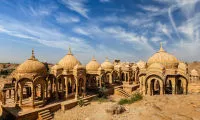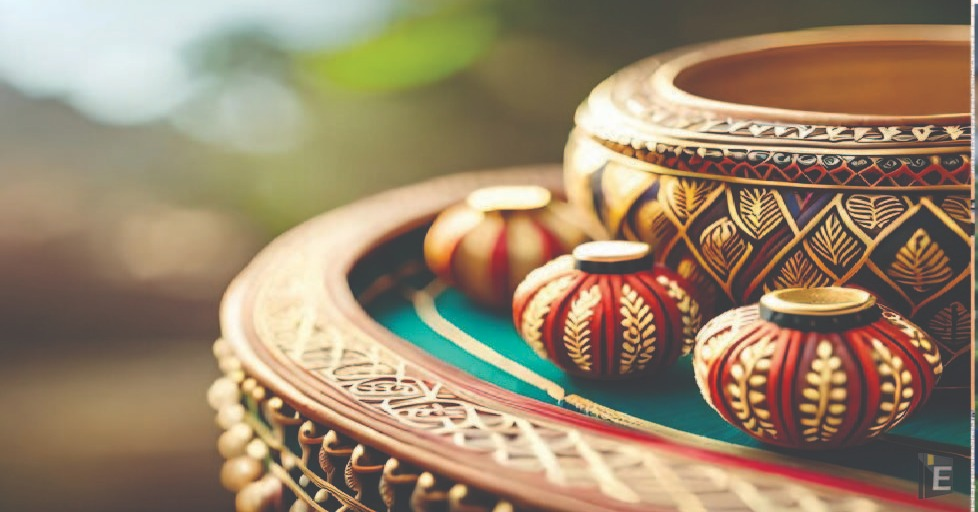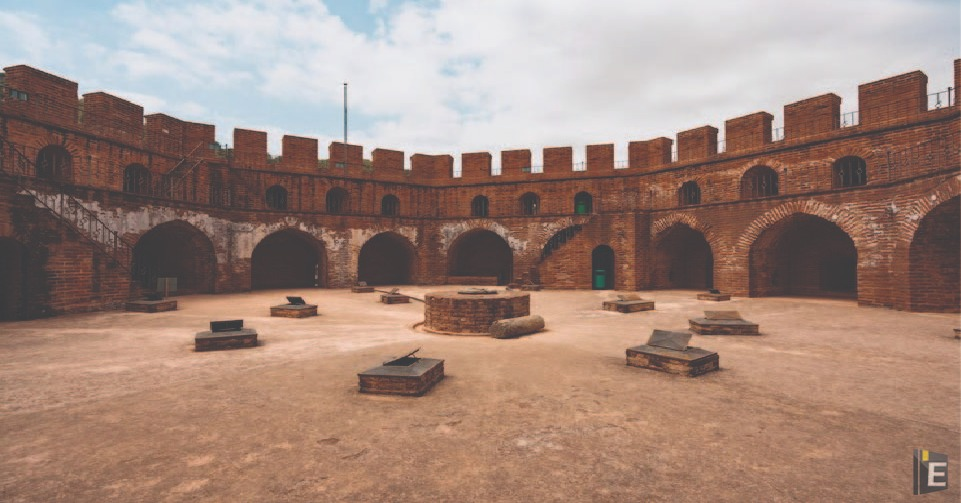 Rajasthan History GK Questions
Rajasthan History GK Questions - Free Test Series, Mock tests and Practice Tests
- Time proven exam strategies
- Exam analysis and simulated tests
- Hand-on real time test experience

Recently Added Articles View More >>
Welcome to our Rajasthan Art and History Questions and Answers blog! Dive into the rich cultural tapestry of Rajasthan, India's vibrant desert state, renowned for its majestic forts, opulent palaces, and colourful traditions.
In this attractive blog of Art and Culture Quiz for Rajasthan Exams, Art and Culture Quiz for Rajasthan Exams has been prepared based on the parameters of Rajasthan Artistic and Cultural Heritage.
Bumper recruitments are held every year by Rajasthan government in various posts like Clerk, Patwari, Gram Sevak, Stenographer, on which every candidate aspires to get a job. But students must keep in mind that the topic of General Knowledge (GK) is of special importance in this competitive exam, so to crack the exam, a candidate must have knowledge of GK questions related to Rajasthan.
You can study here Rajasthan History GK Questions for Competitive Exam related to Rajasthan. You can crack any competitive exam related Rajasthan to study this blog.
Most Popular Articles
Most Popular Articles
Recently Added Questions
What percentage of Sahariya tribe is found in Kishanganj and Shahabad?
1.4K 0 659fb84d32c8dbaa2c4e1962- 198true
- 295false
- 385false
- 495.20false
- Show AnswerHide Answer
- Workspace
- SingleChoice
Answer : 1 98
Explanation :
1. Sahariya is the most backward scheduled tribe in Rajasthan.
2. 98 percent Sahariya tribals live in Kishanganj and Shahbad tehsil of Baran district.
- 1Lallgarh Palacefalse
- 2Umaid Bhavanfalse
- 3Hawa Mahaltrue
- 4Sajjangarh Palacefalse
- Show AnswerHide Answer
- Workspace
- SingleChoice
Answer : 3 Hawa Mahal
Explanation :
1. Hawa Mahal of Jaipur was built by Sawai Pratap Singh.
2. Hawa Mahal is a five-storey palace, made of red and pink sandstone.
3. The famous 'Palace of the Winds', or Hawa Mahal, is one of the major tourist attractions in the city of Jaipur.
4. Apart from this, due to the "Venturi effect", cool air always keeps coming inside the palace through these intricately structured lattice windows, due to which the palace always remains air-conditioned even in the scorching heat.
Match these -
(1) Ajrakh Print (I) Kaithun
(2) Power loom fabric printing (II) Jodhpur
(3) Mothda (III) Balotara
(4) Masuria (IV) Barmer
Choose the correct option -
1.1K 0 6411af67df653d9ac23e89c5- 1(1)-(I), (2)-(II), (3)-(III), (4)-(IV)false
- 2(1)-(II), (2)-(III), (3)-(IV), (4)-(I)false
- 3(1)-(IV),(2)-(III), (3)-(II), (4)-(I)true
- 4(1) (III),(2)-(IV), (3)-(I), (4)-(II)false
- Show AnswerHide Answer
- Workspace
- SingleChoice
Answer : 3 (1)-(IV),(2)-(III), (3)-(II), (4)-(I)
Explanation :
All are matched -
(1) Ajrakh Print (IV) Barmer
(2) Printing on power loom fabrics (III) Balotra
(3) Mothra (II) Jodhpur
(4) Masuria (I) Kaithun
- 1Jhalawarfalse
- 2Baranfalse
- 3Jaloretrue
- 4Rajsamandfalse
- Show AnswerHide Answer
- Workspace
- SingleChoice
Answer : 3 Jalore
Explanation :
The tomb of Ismaili saint Malik Shah In the fort of Jalore, the tomb of Ismail saint Malik Shah is located. The Islamic Mosques of Jalore fort. The Kila Masjid (Fort Mosque) within the fort is also noteworthy as they demonstrate the widespread influence of the architectural decorations associated with the Gujarati styles of the period (i.e. late 16th century). This is because it was built by destroying the existing Hindu temple. Another shrine in the fort is that of Saint Rehmat Ali Baba. Near the main gate.
To which order of Sufism, the symbol of communal harmony Hamiduddin Nagori, belonged?
1.3K 0 6408ba9ca9f6c7de51b48c6f- 1Chistitrue
- 2Kadirifalse
- 3Magribifalse
- 4Suharawardifalse
- Show AnswerHide Answer
- Workspace
- SingleChoice
Answer : 1 Chisti
Explanation :
Hamiduddin Nagauri (1192-1274 AD) was a disciple of Khwaja Moinuddin Chishti. He propagated Sufism as per the orders of his guru. Although he was born in Delhi, he spent most of his time in Nagaur, Rajasthan.





